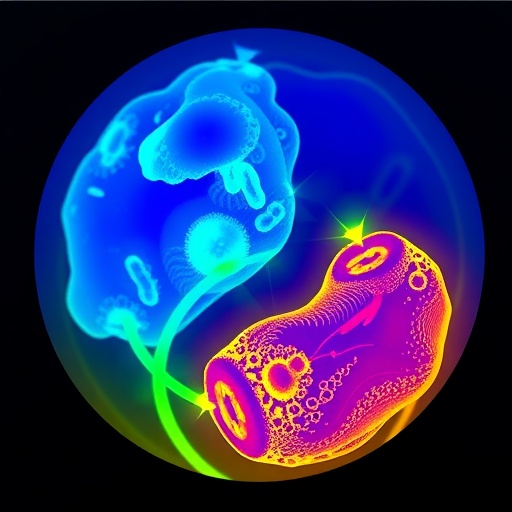In the rapidly advancing field of artificial intelligence, a recent study introduces an innovative framework that fuses deep learning techniques with the critical task of embryo classification. The research, spearheaded by M. Saraniya and J.A. Ruth, unveils the EmbryoNet-VGG16 framework, which aims to revolutionize the efficiency and accuracy of embryo classification systems utilizing Otsu segmentation methods. This groundbreaking approach is not only significant in the realm of reproductive technology but also indicative of the broader trends shaping AI in healthcare.
Embryo classification is a vital process in assisted reproductive technology (ART), where the success of in vitro fertilization (IVF) hinges on the quality of embryos. Traditional methods have relied heavily on the expertise of embryologists, who manually assess embryo viability based on morphological criteria. However, these subjective evaluations often lead to inconsistent outcomes, highlighting the need for a more objective and systematic approach. The EmbryoNet-VGG16 framework offers a solution to this pressing challenge by harnessing the power of deep learning algorithms.
Deep learning, a subset of machine learning characterized by neural networks, enables computers to learn from vast amounts of data. The VGG16 model, known for its depth and architecture, has been pivotal in the domain of image recognition. By adapting this model for embryo classification, Saraniya and Ruth aim to enhance the accuracy of identifying viable embryos. The integration of Otsu segmentation further refines this process by selecting the optimal threshold for distinguishing embryo structures in images, thereby improving segmentation quality and classification performance.
The study underscores the critical role of image processing techniques in medical applications. Otsu’s method, a thresholding technique developed by Nobuyuki Otsu in 1979, is widely recognized for its effectiveness in separating objects within images. The researchers have demonstrated that incorporating Otsu segmentation into the embryo classification process significantly reduces noise and enhances the clarity of the embryonic features being analyzed. This methodological enhancement is pivotal in training the VGG16 model to deliver more reliable classifications.
One of the standout features of the EmbryoNet-VGG16 framework is its capacity to learn from and adapt to large datasets. The study involved training the model on a comprehensive dataset of embryo images, which not only facilitates better recognition patterns but also allows the model to generalize its findings to new, unseen data. This aspect is crucial, particularly in the medical field, where variability is often encountered due to differences in imaging techniques, equipment, and embryo characteristics.
Moreover, the research involved rigorous evaluations and comparisons against existing classification techniques, showcasing the superior performance metrics of the proposed framework. The results indicated a marked improvement in accuracy rates, confirming that the EmbryoNet-VGG16 model can effectively detect viable embryos compared to conventional classification methods. This level of precision has far-reaching implications for ART, as it could potentially optimize the selection process, leading to higher success rates in IVF treatments.
Beyond mere accuracy, the framework’s scalability and adaptability offer promising aspects for future research. As more extensive datasets become available, the potential to refine the model further and enhance its classification capabilities is a tantalizing prospect. Additionally, given the broad applicability of deep learning in various medical domains, insights gleaned from this study may pave the way for the development of similar frameworks in other areas, such as oncology and cardiology.
The EmbryoNet-VGG16 framework not only enhances the classification process but also highlights the growing trend of interdisciplinary collaboration between computer science and reproductive medicine. The need for a cross-functional approach underlines that the future of healthcare relies on integrating advanced technologies with traditional medical practices. This study stands as a testament to these possibilities, showcasing how artificial intelligence can be leveraged to solve complex biological problems.
In terms of practical applications, the significance of this research is manifold. Clinics utilizing assisted reproductive technologies could incorporate the EmbryoNet-VGG16 framework to streamline their embryo selection processes, resulting in better efficiency and outcomes for patients. The potential for reducing the emotional and financial burdens associated with IVF is monumental, aligning healthcare practices more closely with patient needs and expectations.
However, the journey does not end here. The study opens up several avenues for future exploration. One intriguing direction is the exploration of transfer learning, whereby knowledge from the EmbryoNet-VGG16 model can be applied to different classification tasks. Researchers are excited about the prospects of continually improving and evolving the model as new techniques and insights into deep learning emerge.
Ethical considerations also emerge from this technological advancement. As AI assumes a larger role in decision-making processes traditionally governed by human expertise, questions of accountability and transparency arise. It is imperative that as the EmbryoNet-VGG16 framework is integrated into clinical settings, clear protocols and guidelines are established to navigate the moral landscape of AI in healthcare.
In summary, the EmbryoNet-VGG16 framework represents a watershed moment in the intersection of deep learning and reproductive technology. By applying sophisticated algorithms to the nuanced task of embryo classification, this research not only advances the field of ART but also serves as a landmark study in realizing the full potential of AI in medicine. As the scientific community continues to explore the implications and applications of this work, the excitement surrounding its findings illuminates the promise of a future where AI and human expertise harmoniously coexist in pursuit of enhanced healthcare outcomes.
Subject of Research: Embryo classification using deep learning and Otsu segmentation.
Article Title: EmbryoNet-VGG16 framework for deep learning-based embryo classification with Otsu segmentation.
Article References:
Saraniya, M., Ruth, J.A. EmbryoNet-VGG16 framework for deep learning-based embryo classification with Otsu segmentation.
Discov Artif Intell 5, 194 (2025). https://doi.org/10.1007/s44163-025-00445-z
Image Credits: AI Generated
DOI: 10.1007/s44163-025-00445-z
Keywords: Deep learning, embryo classification, Otsu segmentation, reproductive technology, artificial intelligence, VGG16 model.




